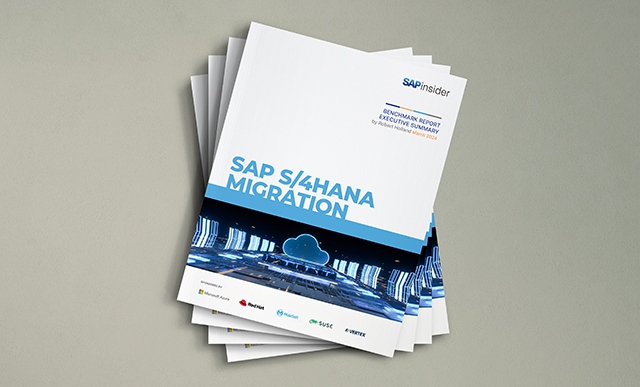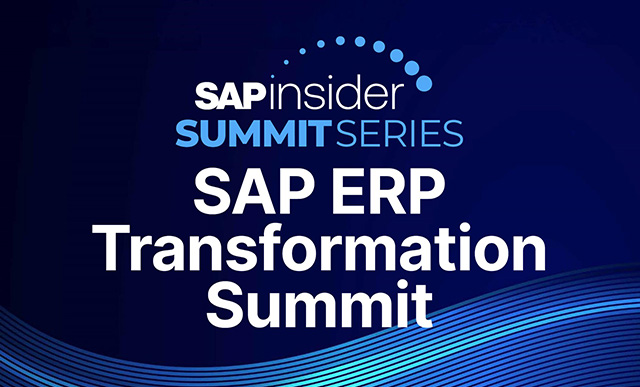Management
As the economy improves and companies’ access to capital continues to grow, so too does the amount of mergers and acquisitions (M&A) across a variety of industries. If M&A activity reaches your company, will you be prepared to integrate unfamiliar systems together under one unified ERP environment?
A recent survey from consulting firm BDO USA found that 78 percent of CFOs at technology firms expect merger and acquisition (M&A) activity to increase this year, as companies look to return to pre-recession numbers more quickly than organic growth typically allows. “After scaling back on R&D and operational expenses during the recession, many technology companies are flush with cash and well positioned to spend,” says Aftab Jamil, partner and national leader of the technology and life sciences practice at BDO USA. “M&A will be a primary tool for companies looking to boost profitability through strategic growth and increased market share." See the sidebar Where will M&A heat up most? for sectors that will see the most growth.
Where will M&A heat up most?
Sector that will see most M&A growth % responding
Traditional software sector 32%
Media and telecom 30%
Biotech and life sciences 15%
Clean technology 13%
Hardware 10%
Source: BDO USA survey of technology CFOs
Jill Hatton, executive vice president and co-founder of Symphony Consulting, says the companies she’s working with aren’t talking about “an acquisition” this year, but are considering “acquisitions” in the short-term — some planning as many as three or four this year alone, she says.
Beyond new acquisitions, Ali Sarraf of Enowa Consulting points out there are still many companies that never fully integrated previously acquired businesses into their ERP systems — projects that now may be reassessed as resources become available. “Between all of these cases, there is a tremendous amount of activity happening around SAP ERP,” says Sarraf.
Increased acquisition activity means many IT and ERP project management teams will be tasked with integrating newly acquired companies into their firms’ ERP systems. Although IT integration might not make headlines, it can be a major factor in the success or failure of an acquisition. Read on to learn how you can most efficiently migrate newly acquired companies into your ERP system.
There’s No Such Thing as Too Early
Typically, the first question IT projects teams need to address during the acquisition process is when to get involved. Although involving IT in a deal too early can prove a waste of time, the more common mistake is not involving IT project teams early enough, which delays the integration and can ultimately have an effect on the success of the acquisition.
“The worst example I’ve seen was a company that wasn’t able to recognize revenue because the IT merger team didn’t migrate their financial systems fast enough,” says Matt DeBenedetti, a principal consultant at Newport Consulting. “They couldn’t book any business for an entire quarter.
The key to getting a project team involved early is to have a strong IT sponsor on the executive management team that is aware not only of the deals in play, but their status as well.
“Companies that recognize the value of IT are more likely to get IT involved early,” Hatton says. “But there are still many companies that consider IT a cost center so they don’t involve them in the planning stages of an acquisition.”
One proponent of the “earlier is better” strategy for a project team’s involvement in an ERP integration is Paul Wilcox, CIO of Houghton Mifflin Harcourt. Wilcox says the acquisition of Harcourt in 2007 came only months after his company had gone through its own migration to SAP ERP from a 37-year-old mainframe system. See the sidebar, Houghton Mifflin Harcourt CIO: Leverage Past Experience.
“The benefits of the merger were based on the synergies the companies could gain, so the integration work needed to begin before the ink was dry,” Wilcox says. “Being involved early allowed us to identify the business process synergies, recognize the cost savings targets, and work with our Harcourt counterparts in identifying where each of us were strong.”
Once an acquisition is put in motion and due diligence begins, the IT project team can begin to build the long-term IT strategy and analyze how the newly acquired company fits into that strategy and the IT landscape. DeBenedetti says this “initial assessment phase” should include tasks such as defining critical success factors, conducting a risk assessment, and doing a preliminary estimate of synergies and compatibilities — but not yet embarking on any real integration work.
The acquisition’s closing allows the acquiring company to perform a detailed assessment and actual inventory of the acquired company’s IT assets. That inventory audit, says DeBenedetti, should go beyond the applications, modules, versions, and hardware. “It should include an analysis of the contracts and service level agreements each company has for its hardware and software. If the acquired company has a better contract for a certain asset than the buyer, it could be worth keeping.”
This is especially true if the acquired company is running an ERP system. This is the time to find out if it is a single instance or multiple instances and determine if the systems will be merged or kept separate for a period, says Hatton. “This is when you start the plan for the actual integration.”
Set Priorities
When it comes to prioritizing integration of specific processes and functions, finance and payroll should be at the top of the list.
“Often the speed at which acquisitions happen makes it difficult to get business-critical processes in place,” says Hatton. “Some integration processes can wait a few months after closing, but prioritize payroll to top of the list because the worst thing you can do is acquire a company and then find out when their first check comes due that they don’t get it.”
Wilcox says his strategy is to begin with a loose integration to get everything flowing through financials and purchasing while giving the new acquisition as much autonomy as possible. “Then, as opportunity presents itself, we roll them in more to the back-end systems. There is no overarching requirement to use SAP ERP no matter what. Every module is evaluated on its own business case and merits.”
In some cases, fully integrating a smaller acquisition might not make sense because there is a chance it won’t fit well in the company and will be divested. “In those cases, overwhelming a small company with the intricacies of an SAP ERP system out of the gate might not be the best thing,” Wilcox says. “If possible, find a way to let them run on their own systems for some time while achieving some synergies.
Even if the new company is kept as a separate legal entity or a subsidiary post-acquisition, all the financial results need to be rolled up, says Prakash Darji, senior director of solution strategy for worldwide business user sales at SAP. “That part is mostly data sharing, but the next priority would be financial consolidation where you’ll merge the financial centers of excellence and financial back-office functions.”
Integrating HR systems should also be a top priority, says Darji, including bringing the HR users into the new ERP system; migrating salary data, compensation plans, and vacation data; providing users access to corporate portals; and eventually migrating email systems.
Integration and migration priorities vary from there based on a company’s goals, Darji says. “Before you get to the stage of aligning business units and processes, you’ve got to get these things done.”
Remember to Look Beyond IT
Despite all of the technical challenges and issues associated with bringing a new acquisition into an ERP system, it’s the non-technical issues that most often derail integration projects. The combination of different processes and a lack of enthusiasm from the acquired company’s staff can make for a very challenging integration project.
DeBenedetti recalls one project in which a large insurance company was consolidating the financial services operation from an acquired company into a business unit. The project was originally supposed to take six months, but lasted 18 months because the IT staff in the acquired company was convinced that when the project was over, they were likely out of work.
“In addition, the organization being acquired had outsourced a lot of its systems management, and seen a lot of departures, so nobody in their IT organization really knew the history of their IT landscape and how it all worked,” he says. “They wound up recruiting a super user in the organization that grew up in the ranks and knew the steps to help with the integration.”
Most experts feel that integrating a company that is already running an ERP system is a smoother transition. For one, companies running ERP systems typically have well-defined processes that can be more easily migrated. Sarraf points out that the master data at a company running an ERP system should be in a more useful format for migrating than if it were in a legacy system. “You’ll just need an MDM [master data management] solution to consolidate customer lists and master data.”
Get It Down to a Science
As with any other process, the more a company makes and integrates acquisitions, the more efficient its projects teams become at the process and the less disruptive that process is to normal, day-to-day operations of the company.
“Companies like Oracle and General Electric that do a lot of acquisitions have the back-office process down,” says Darji. “They know how long each phase should last. They have standard processes.”
To that end, it makes sense for project manager to document processes while going through early acquisition-driven integration projects. “So when the next acquisition comes around, you have a process in place, templates for business processes, you know what the master data should look like, and how to support that business once on SAP in the initial phases,” says Sarraf.
Above All, Stay Focused
Throughout your M&A project, be sure day-to-day business doesn’t sidetrack the merger-focused work. DeBenedetti says it’s important that the head of the project management team or office clearly communicate to business users that current projects might be put on the back burner during the merger-related work.
In the best scenarios, existing projects can be wrapped into the integration work. Wilcox says Houghton Mifflin Harcourt has “instilled a mindset in our program management office to always be looking for projects or portions of projects that can be overlaid or brought together to get the broader benefits more rapidly.”
At the end of the day, it’s the business benefits that drive companies to make mergers and acquisitions. IT’s role in integrating the acquisition, however, is crucial to realizing the business benefits sought.
Houghton Mifflin Harcourt CIO: Leverage Past Experience
Though Houghton Mifflin was still catching its breath from its own mainframe-to-SAP ERP migration when it acquired Harcourt in 2007, it was able to leverage much of that work in migrating Harcourt from its mainframe into Houghton Mifflin’s SAP ERP. In fact, many of the same people were involved in both projects.
“A lot of the documentation we built in following the methodology to get onto SAP was relatively fresh and viable so we were able to leverage that,” says Paul Donovan, vice president of IT development services at Houghton Mifflin Harcourt. Even Harcourt internally had some relevant experience because it had migrated its financials from the mainframe to PeopleSoft as a result of a previous sale. “So migrating to SAP ERP wasn’t as onerous of a program for them as you would normally expect.”
Going forward, Houghton Mifflin Harcourt’s acquisitions will be even more efficient, as the IT organization now knows what questions the business should ask during negotiations to determine if the IT integration aspect of an acquisition will be particularly high cost or difficult.
“The more experienced we get in this area, the less disruptive it is,” says CIO Paul Wilcox. “Integration efforts need to be thought of as a lifestyle change, not a project. We started our integration in December 2007 and we’re still working to get more synergies every year.”
Houghton Mifflin Harcourt’s Tips for Integration Success
- Get involved as early as possible
- If IT can’t be involved in early negotiations, educate those who are on what questions to ask
- Don’t assume every acquisition requires full integration
- Be maniacal about defining scope and schedules on integration projects
- Don’t view integration as a project, but a lifestyle. It never ends.
- Document your processes and reuse what you can
David Hannon
You may contact the author at david.hannon@wispubs.com.
If you have comments about this article or publication, or would like to submit an article idea, please contact the editor.





